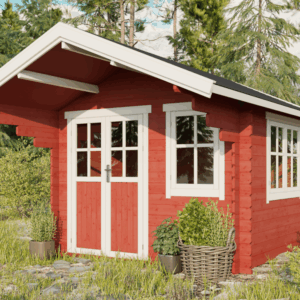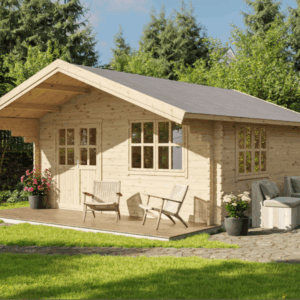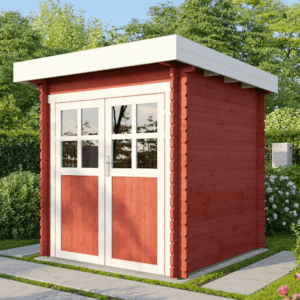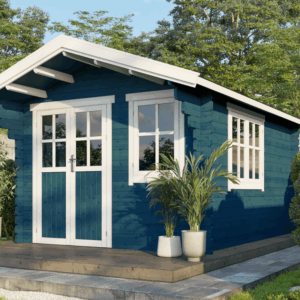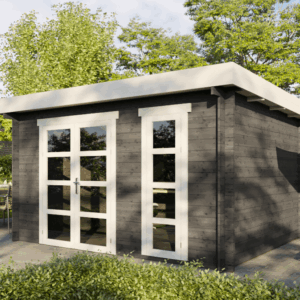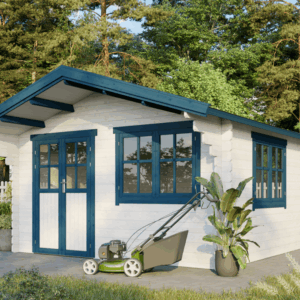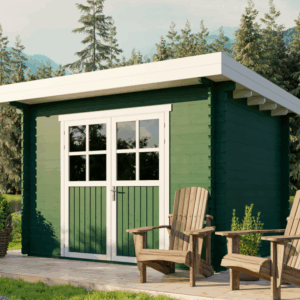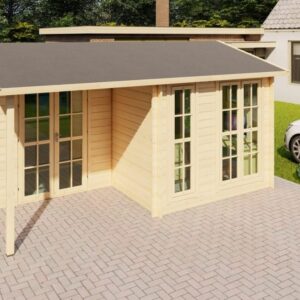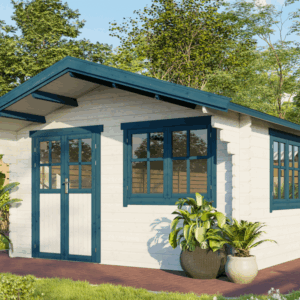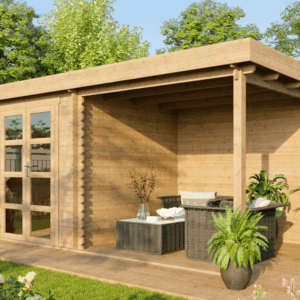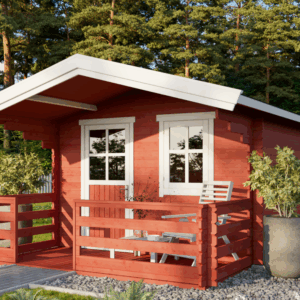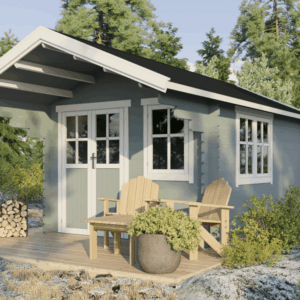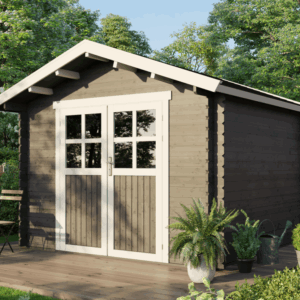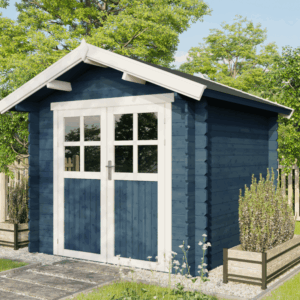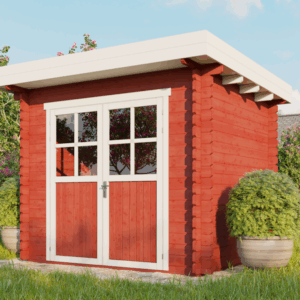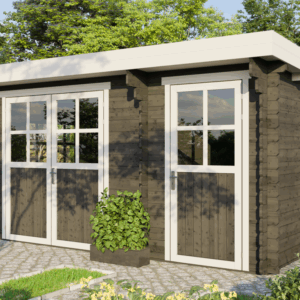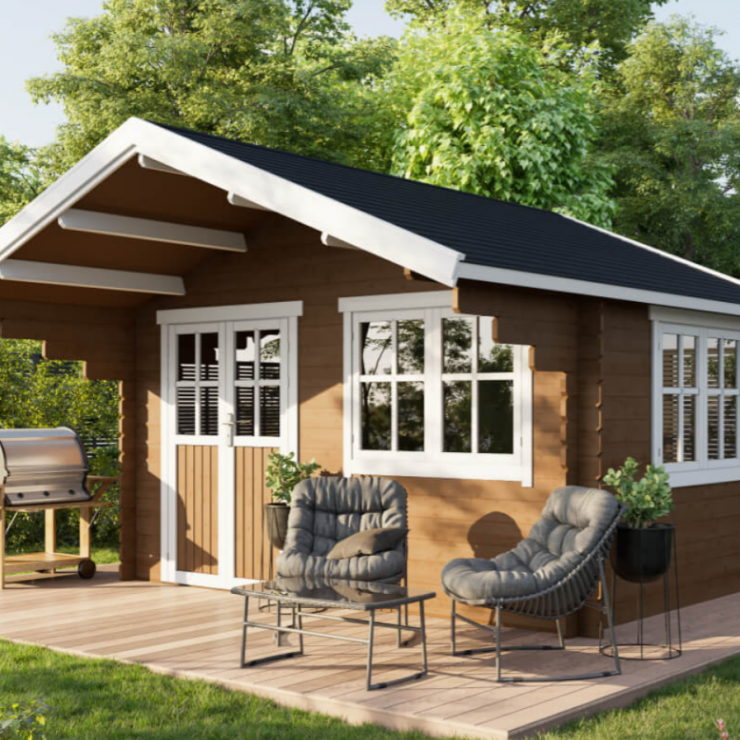Dreaming of waking up to the serene embrace of the Irish countryside, the scent of pine in the air, and the comforting glow of a crackling fire? A log cabin in Ireland offers a unique blend of rustic charm and tranquil living, a far cry from the hustle and bustle of modern life. However, transforming this idyllic vision into a tangible reality often hinges on securing the right log cabin finance in Ireland. This comprehensive guide will navigate you through the intricacies of mortgages, loans, and funding options, empowering you to make informed decisions on your path to owning a slice of Irish paradise.
The allure of log cabins in Ireland is undeniable. They evoke a sense of timelessness, sustainability, and a deep connection with nature that resonates with many. Whether you envision a cozy weekend getaway, a sustainable primary residence, or even a potential holiday let, understanding the financial landscape is the crucial first step. This isn’t a simple purchase like a standard brick-and-mortar property, and therefore, requires a tailored approach to financing.
Navigating the world of property finance can feel daunting, especially when dealing with a niche market like log cabins. Traditional lenders might be unfamiliar with the construction methods and valuation of timber-framed structures. This guide aims to demystify the process, providing clarity on the types of finance available, the hurdles you might encounter, and strategies to overcome them, ensuring your log cabin dream doesn’t get derailed by financial complexities.
Understanding the Unique Nature of Log Cabin Finance
Log cabins, while increasingly popular, present a unique challenge for traditional lenders. Their construction materials, often timber, and sometimes non-standard foundations can lead to different valuation methods compared to conventional houses. Lenders typically assess risk, and the perceived longevity or resale value of a log cabin might differ in their eyes. This means securing a mortgage might require a more specialized approach than you’d anticipate for a typical home.
The valuation of a log cabin is a critical component of the financing process. Unlike brick and mortar, a log cabin’s value can be influenced by factors such as the type of timber used, the quality of construction, its age, and its location. Independent surveyors with experience in timber-framed properties are essential. Without a clear and accurate valuation, lenders will be hesitant to commit, so this is a non-negotiable step in obtaining finance.
Furthermore, the planning permission process for log cabins can also differ significantly from standard dwellings. While some may be built under permitted development rights, others will require full planning permission, which can add time and uncertainty to the project. Lenders will want to see that all necessary approvals are in place before releasing funds, so understanding local planning regulations is paramount.
Mortgages for Log Cabins in Ireland: Navigating the Options
Securing a traditional mortgage for a log cabin in Ireland can be more challenging than for a conventional property. Many high street banks and building societies have specific criteria for lending on timber-framed homes. They often prefer properties with at least 60% conventional construction, meaning a fully timber structure might fall outside their standard lending policies. This doesn’t mean it’s impossible, but it does require diligent research and potentially approaching specialist lenders.
One avenue to explore is mortgages designed for self-build or custom-build properties. These mortgages often have staged payments tied to the construction phases, which can be beneficial for a log cabin build. You’ll need a robust build plan, costings, and a clear timeline to present to the lender. This type of mortgage allows for greater flexibility and control over the construction process, aligning well with the bespoke nature of log cabin ownership.
Another strategy is to consider lenders who are more open to non-standard construction. These might include smaller, regional lenders or those specializing in niche property markets. It’s crucial to be transparent with potential lenders about the nature of the property from the outset to avoid wasting time and effort. Building a good relationship with a mortgage broker who understands the log cabin market can be invaluable in this regard.
Finding the Right Lender: Beyond the High Street
When exploring mortgage options, don’t limit yourself to the most prominent financial institutions. Several smaller, specialist lenders and mortgage brokers in Ireland have a greater understanding of and willingness to finance unique properties like log cabins. These lenders might have more flexible criteria regarding construction materials and loan-to-value ratios. Engaging with a mortgage advisor who has experience with self-builds or non-traditional homes can significantly streamline your search.
Building societies, while often having similar criteria to banks, can sometimes offer more personalized service. They might be more inclined to consider individual circumstances and the specific merits of your log cabin project. It’s always worth making inquiries and explaining your situation clearly. A well-prepared application showcasing the sound nature of your project can make a difference.
Online mortgage brokers are also a valuable resource. They have access to a wider range of lenders and products than you might find on your own. Many have online tools and resources that can help you assess your eligibility and understand the different types of mortgages available. Be sure to choose a reputable broker with a proven track record in assisting clients with similar property types.
Alternative Funding: Loans and Other Financial Instruments
If traditional mortgages prove elusive, or if you’re looking for supplementary funding, several alternative finance options exist for log cabins in Ireland. Personal loans, while typically for smaller amounts, can be used to cover initial deposits or specific aspects of the build. However, their interest rates can be higher, making them less ideal for substantial funding needs.
Securing a loan against other assets you own, such as equity in an existing property, could be another route. This is often referred to as a secured loan and can offer lower interest rates than unsecured personal loans. This option requires careful consideration of your existing financial commitments and the potential risks involved.
Consideration can also be given to equity release schemes if you are an older homeowner looking to fund a log cabin. While not directly a loan for construction, it can unlock capital from your existing home to facilitate the purchase or build. Thorough research and independent financial advice are essential when exploring such options.
Bridging Loans and Development Finance
For those undertaking a significant log cabin build or renovation project, bridging loans and development finance might be relevant. Bridging loans are short-term loans used to ‘bridge the gap’ between the sale of an old property and the purchase of a new one, or to fund immediate construction costs while longer-term finance is being arranged. These loans typically have higher interest rates and are designed for short-term use.
Development finance is specifically for property developers and individuals undertaking significant building projects. This type of finance is usually based on the projected value of the completed development. It can be a complex area, often requiring a professional development plan and significant capital investment. It’s typically for larger scale projects rather than a single-family log cabin, but worth understanding the possibilities.
When exploring these options, it’s crucial to understand the repayment terms, interest rates, and any associated fees. A clear financial plan that outlines how these funds will be repaid is essential for securing any form of development finance. Always seek advice from a qualified financial advisor before committing to these types of loans.
Key Considerations for Securing Log Cabin Finance
Regardless of the financing route you choose, several key considerations will influence your success. A robust business plan, even for a personal residence, demonstrating the viability and cost-effectiveness of your log cabin project is crucial. This plan should include detailed costings, projected timelines, and a clear understanding of any potential risks and how you intend to mitigate them.
Your personal financial history will also play a significant role. Lenders will assess your credit score, income stability, and existing debts. A good credit history significantly improves your chances of approval and can lead to more favourable interest rates. If your credit history has minor blemishes, take steps to improve it before applying for finance.
The location and the specific site of your log cabin are also important. Some lenders may have restrictions on lending for properties in remote or difficult-to-access areas. Ensure the site is suitable for construction and has access to essential services like water, electricity, and waste disposal. The presence of any environmental or planning restrictions on the land will also be a factor.
Building Your Case: What Lenders Look For
When approaching lenders, be prepared to provide comprehensive documentation. This includes proof of identity, income verification, details of your savings, and your credit history. For a log cabin, you’ll also need architectural plans, detailed construction cost estimates, and proof of planning permission or any necessary building warrants. The more organized and transparent you are, the more confident a lender will be.
Highlighting the quality of the build and the materials used can also strengthen your application. If you’re working with a reputable log cabin manufacturer or builder, providing their credentials and track record can offer reassurance. Independent valuations from surveyors experienced in timber construction are invaluable in demonstrating the property’s intrinsic value.
Demonstrating a contingency fund is also a wise move. Lenders appreciate that construction projects can encounter unforeseen expenses. Having a buffer of 10-15% of the total project cost set aside shows financial prudence and preparedness. This can give lenders the confidence that you can manage unexpected costs without derailing the project.
Expert Advice: Working with Professionals
Navigating the complexities of log cabin finance in Ireland is made significantly easier with expert guidance. A qualified mortgage broker specializing in non-standard properties can be your most valuable asset. They have established relationships with lenders and understand the specific requirements for financing log cabins, saving you time and potential rejection.
Engaging an independent financial advisor is also highly recommended. They can provide unbiased advice on the best financing options for your individual circumstances, considering your long-term financial goals. They can also help you understand the tax implications of your purchase and any potential grants or subsidies available for sustainable building.
Consider consulting with a specialist surveyor experienced in timber-framed properties. Their detailed valuation report can be a critical document when applying for a mortgage. Furthermore, a good relationship with your chosen log cabin supplier or builder can provide valuable insights into the construction process and potential funding avenues they may be familiar with.
The Future of Log Cabin Finance in Ireland
As the demand for sustainable and unique living spaces continues to grow in Ireland, it’s likely that the financial landscape for log cabins will evolve. More lenders may begin to offer specialized products tailored to this market, recognizing the increasing popularity and inherent value of timber-framed homes. Staying informed about market trends and new financial products is advisable.
Government initiatives promoting sustainable building and rural development could also offer new funding opportunities. Keep an eye out for grants or low-interest loans that may become available to support eco-friendly construction projects, including log cabins. Researching relevant local and national schemes can lead to significant financial benefits.
Ultimately, securing finance for your log cabin in Ireland is an achievable goal with the right approach. By understanding the unique aspects of log cabin financing, exploring all available options, preparing thoroughly, and seeking expert advice, you can pave the way for your dream retreat. Your serene Irish log cabin awaits, and with informed financial planning, it can soon be a reality.
“`

